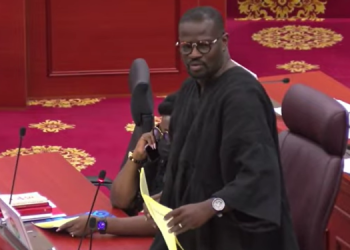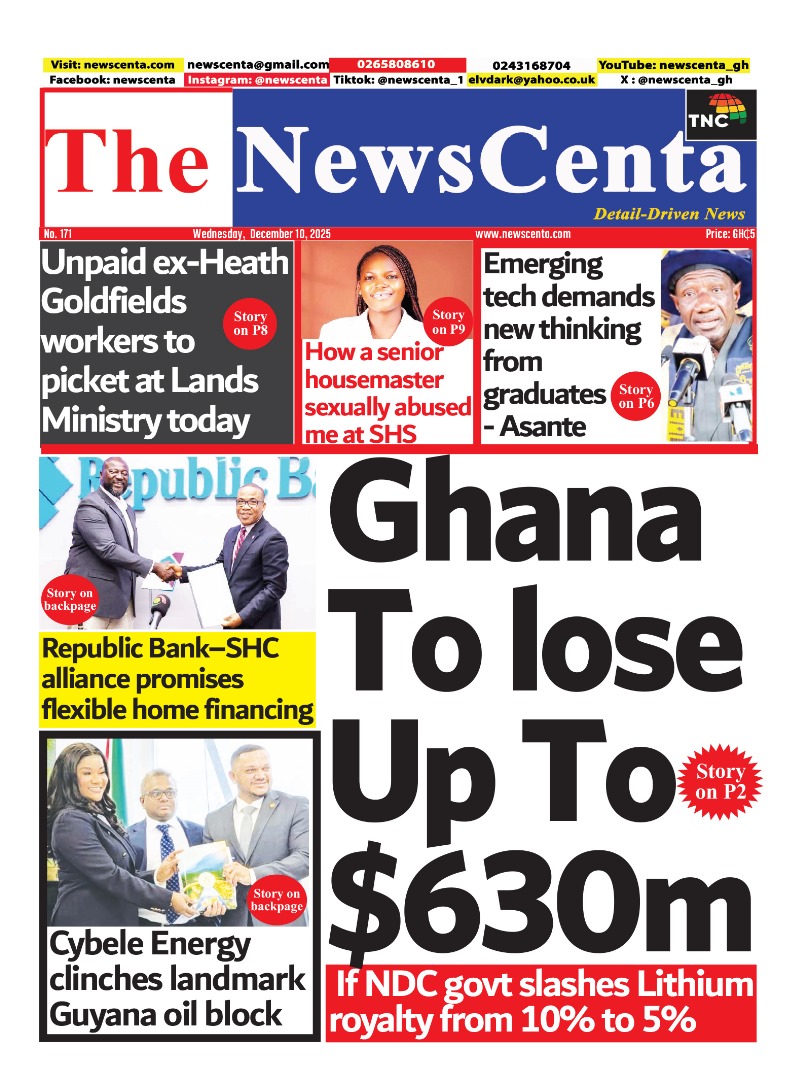Global credit ratings agency Fitch has upgraded Ghana’s Long-Term Foreign-Currency Issuer Default Rating (IDR) to ‘B-‘ from ‘Restricted Default (RD)’, marking a significant milestone in the country’s slow but steady recovery from its most severe economic crisis in decades.
The upgrade reflects Fitch’s assessment that Ghana has successfully normalised relations with the bulk of its external commercial creditors and is on track to complete its debt restructuring by the end of 2025.
The decision, announced on Monday, comes just a month after rival agency S&P Global Ratings also raised Ghana’s sovereign foreign currency credit rating to ‘CCC+’, citing improved creditworthiness as the West African nation draws closer to finalising its comprehensive debt restructuring deal.
External debt restructuring in final phase
Ghana’s government has restructured $13.1 billion of its Eurobond debt as of October 2024, with only $2.6 billion in non-performing external debt yet to be restructured.
Fitch estimates that $700 million of this outstanding amount is commercial debt, representing just 5% of the original restructuring perimeter.
Negotiations with the remaining holdout creditors are ongoing, and Fitch considers the risk of prolonged delay minimal.
On the bilateral side, Ghana ratified a Memorandum of Understanding (MoU) in January 2025 covering $5.1 billion of official debt.
The outstanding balance includes $1 billion owed to supranational institutions such as the IMF and World Bank, and $840 million owed to bilateral creditors classified as “official” under Fitch’s criteria.
Fitch is optimistic that the full restructuring process will be concluded by the close of 2025, solidifying Ghana’s return to international credit markets.
Managing debt and deficits
Despite a setback in 2024, when the primary fiscal deficit widened to 3.9% of GDP—well above the target of a 0.5% surplus—analysts expect a gradual fiscal recovery.
The overshoot, typical of Ghana’s historical trend of fiscal slippage during election years, is being reassessed, as some arrears are still under audit and could lower the final deficit figure.
The new government, in office since January 2025, has targeted a primary surplus of 1.5% of GDP this year, largely through reductions in primary expenditure.
Fitch projects a more conservative surplus of 0.5% in 2025, rising to 0.9% in 2026.
The overall budget deficit is expected to narrow from 7.9% in 2024 to 3.6% in 2025 and 3.2% in 2026.
Debt service pressures easing
Ghana’s foreign currency debt service obligations, including domestic US dollar bonds, are projected to reach 1.2% of GDP ($1.2 billion) in 2025 and 1.4% ($1.9 billion) in 2026.
This includes interest payments of 0.5% and 0.4% of GDP respectively.
Importantly, the country’s gross international reserves rose to $6.8 billion in 2024, helping to ease liquidity concerns and reinforcing Fitch’s view that Ghana can meet its obligations.
For local currency debt, service costs are expected to be 3.8% of GDP in 2025 and 3.9% in 2026.
These figures include interest payments of 3.6% and 3.7% respectively.
Notably, the first major domestic bond maturities under the 2023 Domestic Debt Exchange Programme (DDEP) will occur in 2027, requiring the government to remain vigilant in managing domestic refinancing risks.
Liquidity risks declining but still elevated
Fitch estimates Ghana’s interest-to-revenue ratio—a key measure of fiscal sustainability—will hover around 26% in both 2025 and 2026, down from a peak of 48% in 2021.
While this is still well above the ‘B’ and ‘C/D’ rating medians of 13% and 16%, it represents a significant improvement.
The increase in interest payments will be driven by resumed servicing of external commercial debt and rising coupon payments on DDEP bonds, which are scheduled to rise to an average of 9.1% in 2025 from 5.4% in 2024.
Government deposits, which stood at 4% of GDP at the end of 2024, are forecast to gradually increase to 4.6% by 2026. Additionally, the sharp drop in T-bill yields in recent months has lowered the cost of short-term borrowing and reduced immediate cash flow pressures.
Public debt on downward path
Fitch projects that Ghana’s public debt will fall to 60% of GDP by 2025 and remain at that level in 2026—down significantly from 72% in 2024 and a crisis-era peak of 93% in 2022.
The decline will be driven by strong nominal GDP growth, fiscal tightening, ongoing debt restructuring, and an unexpected but sharp appreciation of the cedi in early 2025.
While this debt level remains above the 2026 ‘B’ rating median of 51%, the trajectory is viewed as sustainable given the underlying macroeconomic improvements.
Current account surpluses support reserve build-up
Ghana posted a record current account surplus (CAS) of 4.3% of GDP in 2024, reflecting strong performance in gold exports and lower import demand during the economic slowdown.
This surplus is forecast to narrow to 1.1% by 2026 as imports pick up and commodity prices normalize.
Nonetheless, the outlook remains favourable compared to the projected 3% current account deficit for peer ‘B’ rated countries.
As a result, Ghana’s gross international reserves are expected to climb to the equivalent of 3.9 months of current external payments by 2026—up from just 1.6 months in 2022.
Though still below the median of 4.9 months for ‘B’ rated countries, the trend is clearly positive.
Inflation moderating, interest rates may fall
Inflation, which stood at 23% in 2024, is projected to fall sharply to 15% in 2025 and 10% in 2026.
The strengthening of the cedi, ongoing tight monetary policy, and falling international oil and food prices are all contributing to the downward trend.
Given these dynamics, Fitch expects the Bank of Ghana to begin cutting its policy rate starting July 2025, potentially easing the cost of domestic borrowing and stimulating private sector activity.
Resilient economic growth anchors recovery
Despite the shocks of debt restructuring and commodity price fluctuations, Ghana’s economy grew by 3.1% in 2023 and an impressive 5.7% in 2024.
Fitch forecasts continued growth of 4% in 2025 and 4.5% in 2026.
The recovery is being powered by a rebound in agriculture—especially cocoa output—and expansion in both industry and services.
This resilient growth is seen as crucial to maintaining investor confidence and absorbing the social costs of fiscal tightening.
Governance and institutional strength still mixed
Ghana retains a Governance Relevance Score (RS) of 5—the highest possible—on factors including political stability, rule of law, and institutional quality.
The country ranks in the 50th percentile of the World Bank’s Governance Indicators, reflecting its solid record of peaceful political transitions, moderate institutional capacity, and reasonably effective control of corruption.
However, Fitch notes that governance and transparency will remain under scrutiny as the new administration implements its post-restructuring policy agenda.
A nation on the mend
Fitch’s upgrade of Ghana’s rating marks a strong vote of confidence in the government’s debt management and macroeconomic reforms.
While challenges remain—particularly with liquidity risks, revenue generation, and the burden of interest payments—the trajectory is positive.
If the current path of fiscal discipline, exchange rate stability, and structural reforms continues, Ghana could soon regain full access to international capital markets and cement its recovery from crisis to credibility.











